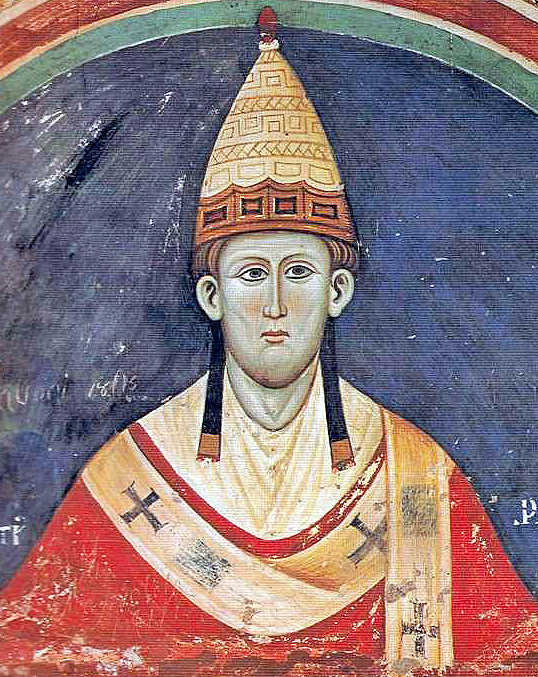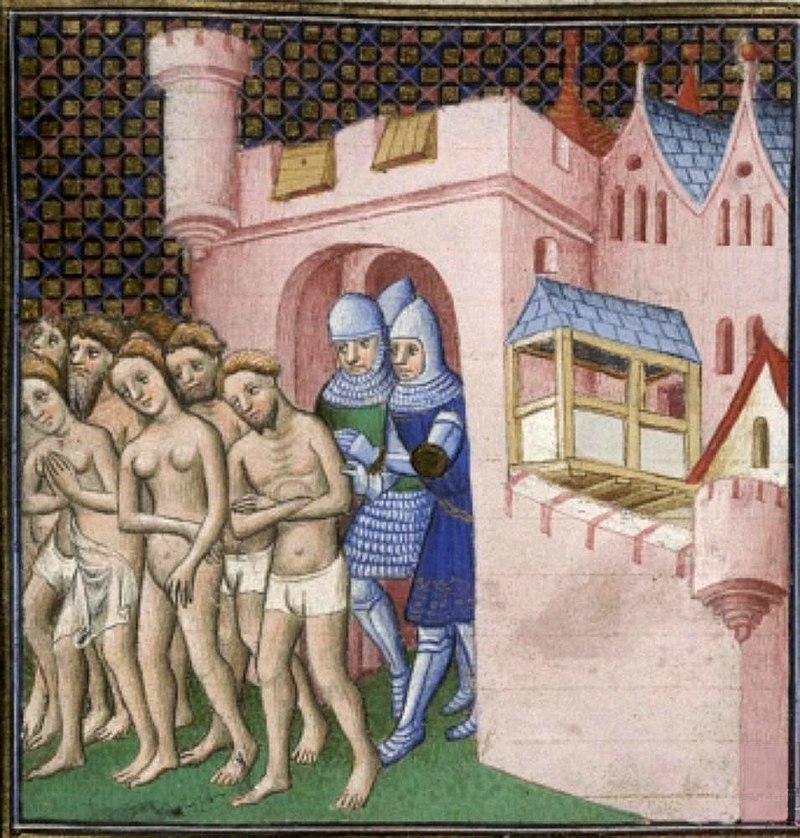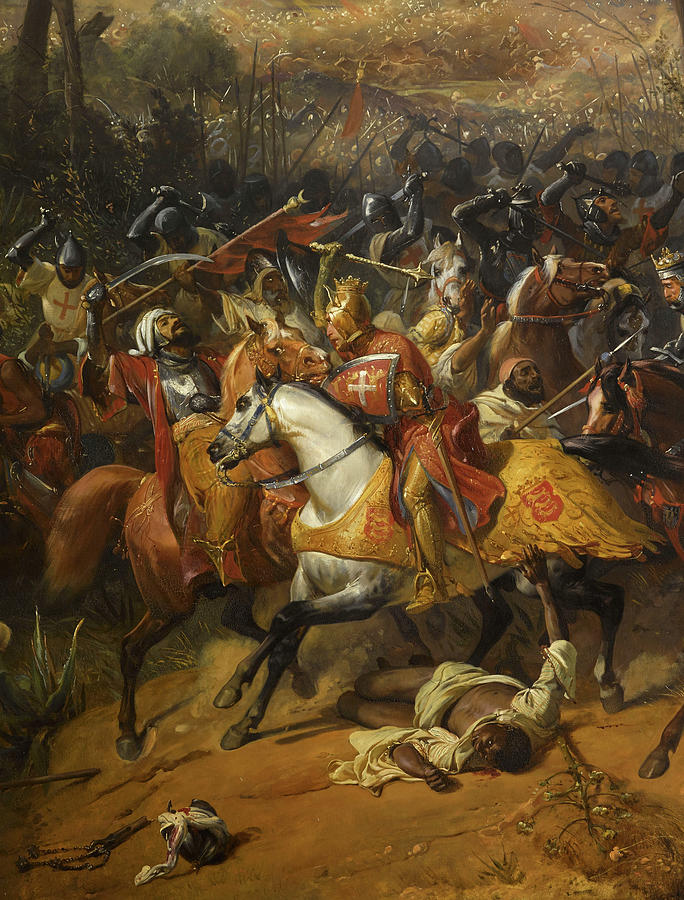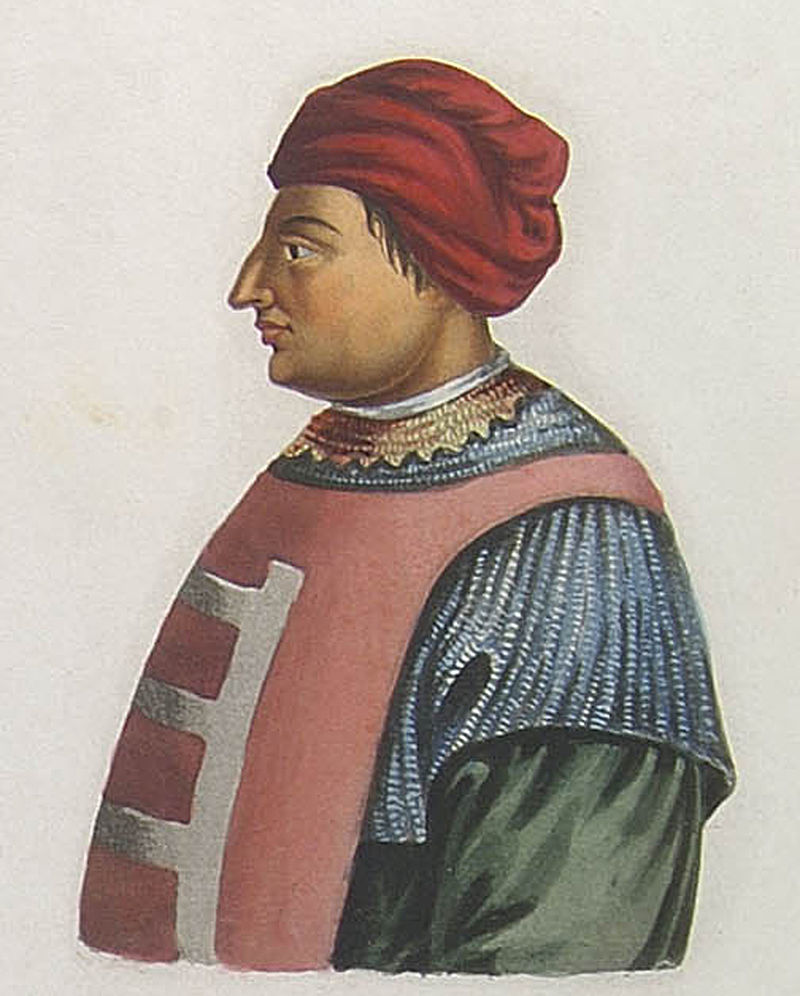
Today 11 September is anniversary of the 1697 battle of Zenta. In one of the most impressive military victories in all history, the Habsburg Imperial army led by the legendary Eugene of Savoy crushed the huge invading Ottoman army in just few hours, losing only few hundred men! 

The story of this battle is the story of a great man who was known to take the most bold, the most courageous and the most aggressive approach in battles, whether as a warrior or as a commander - Prince Eugene of Savoy, the noble knight! One of the greatest commanders in history! 



Eugene's story began in France, in this ancient enemy of Habsburgs whom he would later serve. Descended from the noble blood of Savoy, he grew up on the court of King Louis XIV. As the youngest son he was set for a career in the Church, which he didn't want to do. His birthplace: 

Even though he was seen as physically frail, Eugene wanted to serve in the military. He grew up studying the ancient warriors and generals and had an immense desire to be like them. At 19 he expressed his desire to join the military to the French king, but was firmly rejected. 



The young Eugene had no choice but to look for a chance at immortal glory as a warrior elsewhere, joining the old enemy of France, the Habsburg Empire led by Leopold I who immediately liked the noble young boy who wanted to fight under his banner of the eagle and accepted him. 



Fighting for Habsburgs instead of France was a blessing as Eugene would now have a chance not just to fight for himself and for his realm but for the entire European Christendom as the Habsburg Empire was the last line of defense against the invading Mohammedan Ottoman Empire. 

It also seems like a fitting destiny that such a great man's first battle would be one of the most legendary battles in history - the 1683 siege of Vienna! Eugene was part of the Imperial relief force and distinguished himself in battle as the Ottomans were crushed and repelled! 
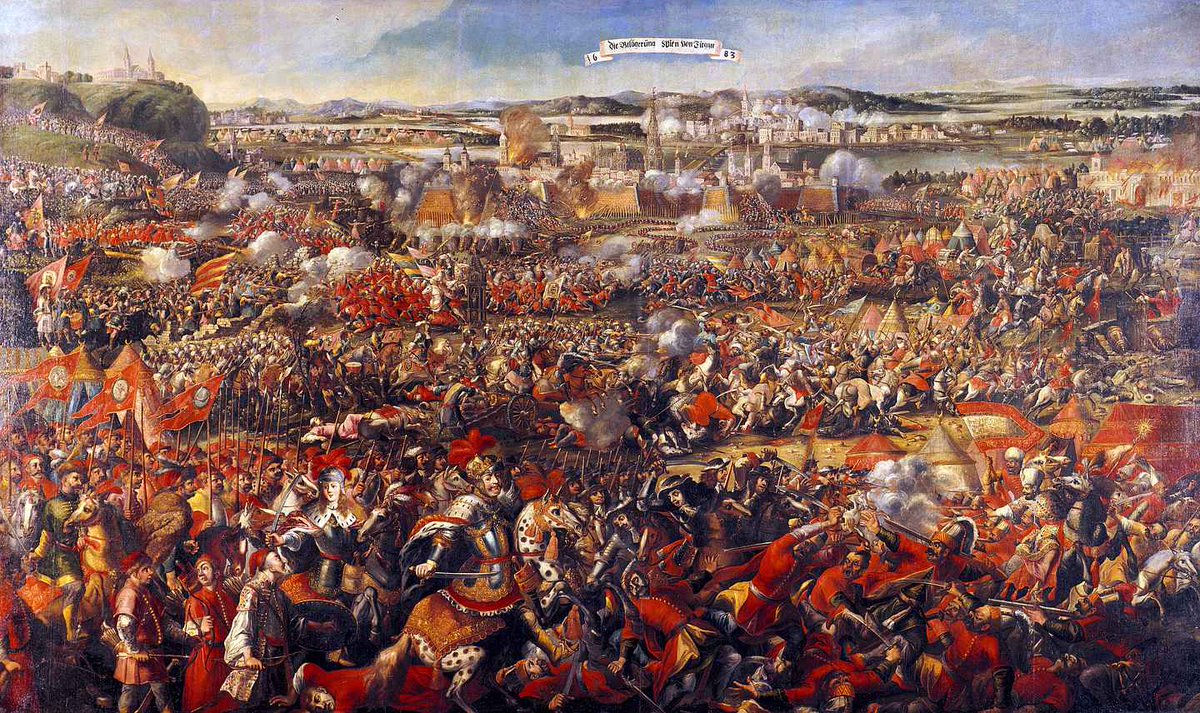
Since the rejection by the French king, it was almost as if it was a matter of honor for Eugene to show that he was the bravest warrior out of all on the battlefield and he always distinguished himself with immense courage. He gained respect quickly and rose through the ranks! 

The Christian victory at Vienna started a long war against the Ottomans in which the Habsburgs went on a counter-offensive to reconquer Kingdom of Hungary and achieved a string of important victories in which Eugene rose through the ranks as a commander of a cavalry regiment. 

During the 1686 triumphant siege of Buda Eugene's dragoon regiment was crucial to secure the rear of the army against the Turks, and he proved himself at Mohács the next year again, where the young Eugene was assigned to carry the news of victory to the Emperor - a great honor! 

Eugene's bravery led him to being wounded many times in battles. One of these wounds caused a temporary setback as he was seriously wounded by a musket ball in 1688 siege of Belgrade. Even wounded he still encouraged his men while on his knees to advance and triumph! 

When he returned to action Eugene had to fight against his former homeland and his new enemy France in northern Italy as the Nine Years' War broke out. He was frustrated with his incapable commanders who lost battles, he lamented he would have easily won if he was a commander. 

Eugene of Savoy would finally get the chance to have supreme command over the Imperial army in 1697 at age of 34, appointed by the Emperor who had always trusted him. By that time, the Imperial army was in poor condition and the Empire was bankrupt from the long wars... 

Meanwhile the new Ottoman Sultan Mustafa II was preparing a new invasion to reclaim Hungary, trying to seize the opportunity as the Habsburgs were weakened while the Ottoman empire recovered and gathered a massive army of around 100000 men for invasion. 



The Habsburgs had always preferred to employ defensive strategy against Ottomans because in almost two centuries of struggle against them by that point, they were also facing the Ottoman allies France at the same time and could not afford to commit to a large counter-offensive. 

But this was totally the opposite of Eugene's ultra-aggressive approach to warfare. This is where Eugene's true greatness was! Even though he only had an army of some 35000 available, he decided to go on the offensive against the mightiest empire at the time to face them in open! 



Eugene personally took loans and enlarged his army to 50000. He wanted to risk everything on the battlefield against the twice larger Ottoman army! Even though the Emperor warned him not to engage in battles, his intention was to confront the Ottomans in a decisive encounter! 

Eugene of Savoy was not just a courageous warrior and commander but was also a great tactician with mathematical precision. He knew that one of the crucial elements of warfare was speed of movement and he had his army do forced marches to cover large distance. Location of Zenta: 

This is how the battle happened at Zenta, right when the Ottoman army was crossing the Tisza river on a pontoon bridge. Prince Eugene managed to get his army to this location in incredibly short time and surprised the Ottomans completely when they saw his army approaching. 



What a sight this must have been! The ancient Imperial banners waving with pride and glory in the sun, just two hours from sunset! The Ottomans were halfway over the river and still crossing the bridge. Eugene observed this from distance and figured out his battle plan instantly. 

Prince Eugene was true to his bold aggressive nature of warfare and took the most high-risk approach. His predatory battlefield instinct kicked in and he ordered the cavalry charge instantly! The Imperial cavalry charged from all sides and caused complete chaos among Ottomans! 

The charge was devastating! The Ottoman janissaries fought bravely and valiantly, but there was not much they could do against such well executed tactical maneuver. They realized they were facing a force of nature, an army with a commander on the level of Hannibal and Alexander! 

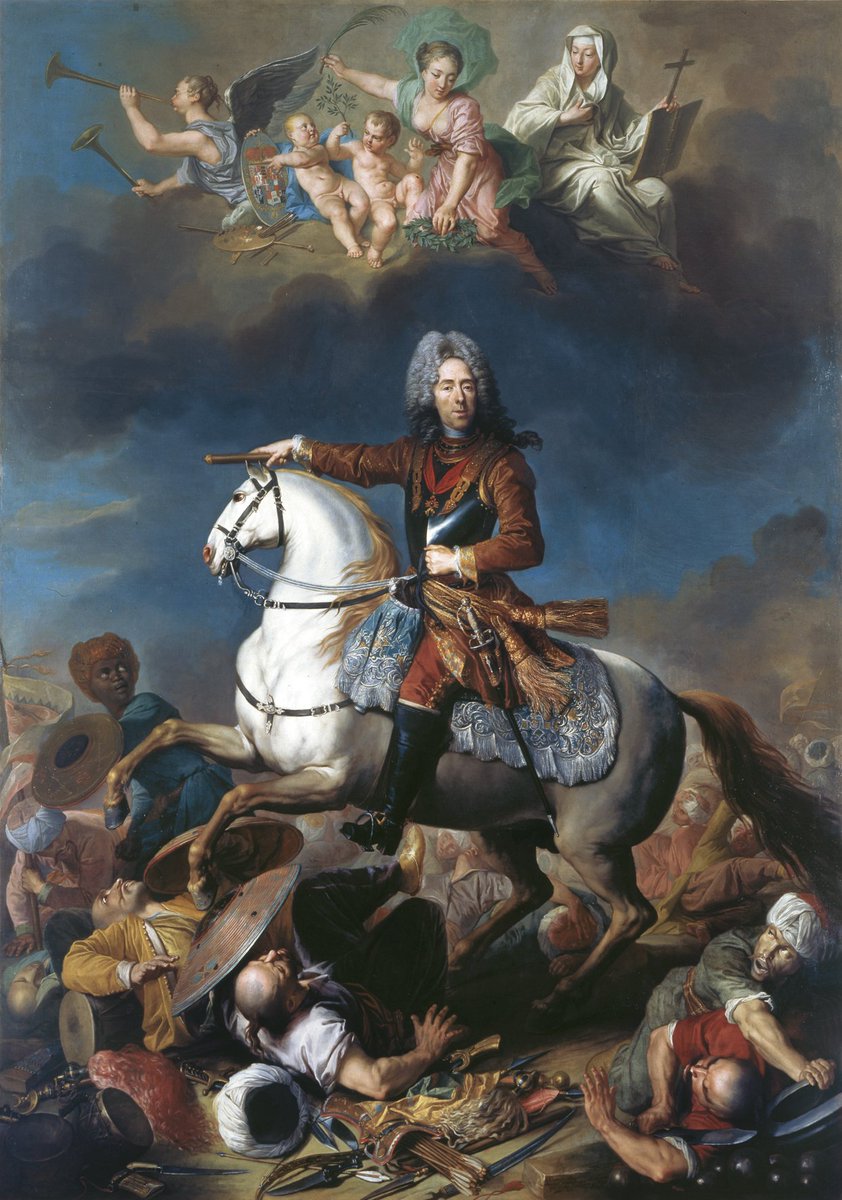

Eugene put all his cavalry into the charge and didn't keep any in reserve as he relied on his ability to move his men on the battlefield during combat. He managed to withdrew and reorganize some of his cuirassiers and dragoons and had them charge into Ottoman weak spots again! 

Eugene also ordered the artillery to bombard the bridge which collapsed and cut the Ottoman army in two. Many Ottoman soldiers drowned in the river trying to escape while the rest were trapped and slaughtered by the Imperial army. The Ottomans on the other side started to flee. 

The victory was complete just before sunset. Eugene remarked, "Even the sun would not set, until it had seen the complete triumph of the imperial arms." What a triumph it was! In only few hours Ottomans lost more than 30000 men while the Habsburgs only lost around 500. 

The scale of the defeat at Zenta was crushing for the Ottomans. The Sultan saved himself by fleeing, but his Grand Vizier and many other of his important men were dead. The Ottoman camp was abandoned and the Habsburgs capture significant spoils of war! 

One of the most impressive trophies captured by the Imperial army was the state seal of Grand Sultan Mustafa. Such prestigious Ottoman state seal was never before lost in battles! They also lost a lot of cannons, war chest and 6000 camels and 15,000 oxen! 

The devastating defeat forced the Ottomans to negotiate the Treaty of Karlowitz in 1699. The Habsburg reconquest of Hungary was complete, meanwhile just like the was setting during the battle of Zenta, the sun was also setting on the once mighty Ottoman Empire. 



• • •
Missing some Tweet in this thread? You can try to
force a refresh










